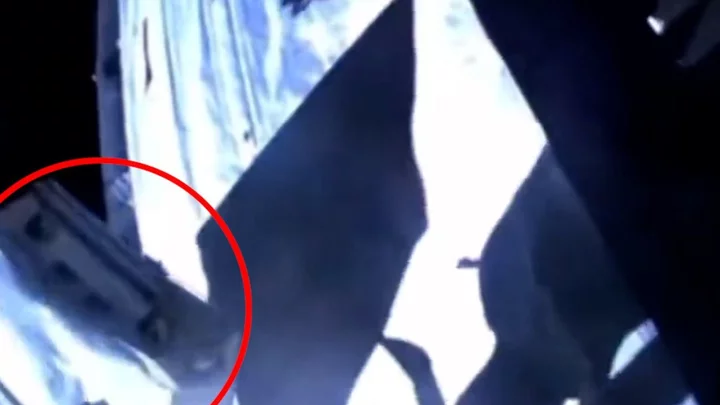
Astronauts dropped a toolbag in space which you can see with just binoculars
Whilst repairing external parts of the International Space Station (ISS) last week, astronauts dropped a toolbag. And it turns out you just need a pair of binoculars to see it. The bag is tiny compared to the ISS, but it's reflective enough that when it catches the Sun's light it reaches 6th magnitude from Earth according to Earthsky. Under very dark skies, some powerful binoculars or a small telescope might allow you to see the toolbag. The bag is moving at almost exactly the same speed as the ISS on the same path and about a minute ahead of it. Over time, however, its distance from the ISS will grow, making it harder to find. Eventually, its orbit will become low enough that it burns up from friction with the outer atmosphere. You can find out if you have the ISS passing overhead here if you want to have a chance of seeing the bag. The ISS can only be seen easily when it's dark on the ground and sunlight is still catching it. It means it's usually best seen when the skies are not fully dark - so around dusk or dawn. Here is what the toolbag looks like from space: Sign up to our free Indy100 weekly newsletter Have your say in our news democracy. Click the upvote icon at the top of the page to help raise this article through the indy100 rankings. How to join the indy100's free WhatsApp channel
2023-11-13 22:51

Eating strawberries can reduce the risks of dementia, study finds
A recent study has found that eating strawberries daily could reduce the risk of developing dementia. Researchers at the University of Cincinnati claim that by eating the fruit every day, certain people of middle age could reduce their risk of dementia. The 12-week study published in Nutrients had 30 overweight patients - who had complained of mild cognitive impairment - abstain from eating berries, aside from a daily packet of supplement powder mixed with water and consumed with breakfast. Half of the participants, who were 50 to 65 years old, received a powder that contained the equivalent of one cup of whole strawberries (the standard serving size), whilst the other half received a placebo. Participants' long-term memory, mood, and metabolic health were measured by researchers. The team found that those who had taken the strawberry powder had performed better on a wordlist learning test, as well as having a significant reduction in depressive symptoms. "Both strawberries and blueberries contain antioxidants called anthocyanins, which have been implicated in a variety of berry health benefits such as metabolic and cognitive enhancements," said Robert Krikorian, professor emeritus in the UC College of Medicine's Department of Psychiatry and Behavioural Neuroscience. "There is epidemiological data suggesting that people who consume strawberries or blueberries regularly have a slower rate of cognitive decline with ageing." Ellagitannins and ellagic acid are also found in strawberries, which are known to possess anti-inflammatory, antioxidant, antimicrobial, and anticancer properties. Krikorian went on to explain that strawberries may have improved cognitive function by reducing inflammation in the brain. "Executive abilities begin to decline in midlife and excess abdominal fat, as in insulin resistance and obesity, will tend to increase inflammation, including in the brain," he explained. The university did, however, acknowledge that Krikorian's research was partly funded by the California Strawberry Commission. Although said that the group had no role in the design of the study, data collection and analysis, or publication of the results. Sign up to our free Indy100 weekly newsletter Have your say in our news democracy. Click the upvote icon at the top of the page to help raise this article through the indy100 rankings. How to join the indy100's free WhatsApp channel
2023-11-13 20:48
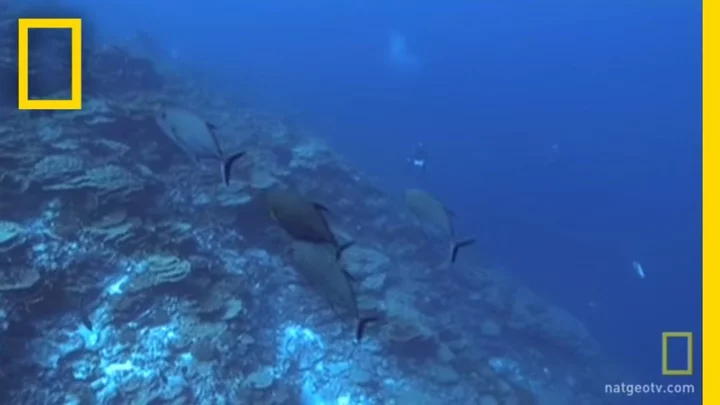
Incredible footage of 'hollow island' in middle of ocean shared by divers
Google Earth has brought attention to some of the weirdest things we’ve ever seen on the internet – and that’s really saying something. But at times, it really helps to shine a light on truly awe inspiring places that most people would otherwise never even hear about. That’s certainly the case with Vostok island, which people on the internet have been focusing on recently. The uninhabited island is found in the Pacific Ocean and it’s become the subject of much speculation over recent times. But why are people suddenly obsessed with this random island in the middle of nowhere? Well, it’s because the way it’s presented on Google Earth, it looks like the island is “hollow”. Taking an initial look on there, it does look like the island could contain a deep lake or another unusual landform. However, it’s pretty common for areas to be blocked out on Google Earth for a number of reasons. Sometimes, the site just doesn’t have access to different places, or people have requested places to be removed. In the years since it first appeared on Google Earth, there have been all kinds of conspiracies surrounding the Island. Over more recent times, though, it’s become more and more clear that there’s nothing that mysterious about Vostok – and no, it’s not hollow. In fact, it’s part of the Republic of Kiribati, and it’s a remote haven for nature lovers. It’s still a relatively obscure island, given its location, but one National Geographic video does show a diver discussing the idyllic conditions among the island’s coral reefs. Strange things do, though, continue to fascinate people on Google Earth. From mysterious "pyramids” in Antarctica to a "UFO" near the home of Harry and Meghan, there's plenty for conspiracy theorists to get excited about. Sign up for our free Indy100 weekly newsletter How to join the indy100's free WhatsApp channel Have your say in our news democracy. Click the upvote icon at the top of the page to help raise this article through the indy100 rankings
2023-11-11 01:19

Scientists prove animal named after Attenborough is not extinct after all
An ancient egg-laying mammal named after Sir David Attenborough that was thought to be extinct is actually alive and well, scientists have proved. Attenborough’s long-beaked echidna, which is thought to have been around since the dinosaur era, was caught on camera by an Oxford University expedition to Indonesia. The spiky, furry, beaked creature has been described as a “living fossil” because of how long it has been walking the Earth, about 200m years. Until the video, scientists had relied on a dead, decades-old museum specimen of the creature, as evidence that it was still around. Dr James Kempton, who led the expedition, said: “I was euphoric, the whole team was euphoric.” “I’m not joking when I say it came down to the very last SD card that we looked at, from the very last camera that we collected, on the very last day of our expedition.” Dr Kempton said he had been in touch with Attenborough about the rediscovery, and that the broadcaster was “absolutely delighted”. The expedition also discovered new species of insects and frogs on the trip, which took them through previously unexplored stretches of the Cyclops Mountains, a steep, high-altitude area of Papau, Indonesia. Scientists were twice affected by earthquakes over the course of their expedition, and had to climb narrow ridges with cliffs either side, often in heavy rain. Dr Kempton added: “You're slipping all over the place. You're being scratched and cut. There are venomous animals around you, deadly snakes like the death adder. “There are leeches literally everywhere. The leeches are not only on the floor, but these leeches climb trees, they hang off the trees and then drop on you to suck your blood.” He said he hopes the rediscovery will help promote conservation efforts in the Cyclops Mountains. The species is not currently protected in Indonesia, and scientists don’t know how many there are. “Given so much of that rainforest hasn't been explored, what else is out there that we haven't yet discovered? The Attenborough long-beaked echidna is a symbol of what we need to protect - to ensure we can discover it.” How to join the indy100's free WhatsApp channel Sign up to our free indy100 weekly newsletter Have your say in our news democracy. Click the upvote icon at the top of the page to help raise this article through the indy100 rankings.
2023-11-10 20:18

Scientists discover new truth about the Sun's structure
Our understanding of the Sun may have completely changed after astronomers calculated that it might not be quite as big as we thought it was. The Sun is so powerful that it can disrupt the Earth’s magnetic field giving us the Northern Lights. It also continually baffles scientists, as one recent discovery found that part of the Sun is broken. Now, experts have discovered that the Sun may be a bit smaller than everyone thought, which could alter how we think of the star at the centre of our universe. Two astronomers made the calculation that the radius of the Sun is smaller, by a few hundredths of a per cent, than originally believed. The results, which are being peer-reviewed, are based on evidence gathered from sound waves that are made and trapped inside the burning hot sun. These sound waves are known as p-modes and they make noise like a growling stomach, suggesting a pressure change in the Sun’s interior. Analysing p-mode oscillations offers a “dynamically more robust” understanding of the Sun’s insides, according to astrophysicists Masao Takata from the University of Tokyo and Douglas Gough from Cambridge University. According to their research using evidence from p-modes, the solar photospheric radius is fractionally smaller than calculations made using the traditional reference model for the Sun’s seismic radius that analyses waves called f-modes. The reason for this difference is not very well understood. Astrophysicist Emily Brunsden told New Scientist: “To understand the reason for their difference is tricky because there’s just a lot of things going on.” How to join the indy100's free WhatsApp channel Sign up to our free indy100 weekly newsletter Have your say in our news democracy. Click the upvote icon at the top of the page to help raise this article through the indy100 rankings.
2023-11-09 19:53

Elon Musk wants a volunteer to have their head cut open for his brain implants
Elon Musk's chip implant company Neuralink is looking for its first volunteer since the company got approved to perform tests on humans by the FDA. Prior to its approval for human clinical trials, Reuters reported that the company had killed roughly 1,500 animals during testing. The volunteer would have to be willing to have a piece of their skull removed so a robotic surgeon can insert thin wires and electrodes into their brain. The company told Bloomberg News, the ideal candidate will be a quadriplegic under the age of 40. Neuralink hopes to eventually make a device that will allow people to send messages or play games using only their thoughts. Ashlee Vance, the author of the 2015 biography 'Elon Musk: Tesla, SpaceX, and the Quest for a Fantastic Future', said in his Bloomberg report that despite "an outpouring of interest from thousands of prospective patients," the company is still seeking its first volunteer. The chip would enable computer functions to be performed using only thoughts via a "think-and-click" mechanism. If the ideal volunteer is chosen, a surgeon will remove part of the person's skull, before a robot dubbed "R1", equipped with cameras, sensors and a needle will push 64 threads into the brain whilst doing its best to avoid blood vessels. Reassuring. Each thread has roughly the diameter of 1/14th of a strand of human hair, and is lined with 16 electrodes that are programmed to gather data about the brain. The electrodes record neural activity related to movement intention, which is then decoded by Neuralink computers. Neuralink did not reveal how many participants would be enrolled in the trial or how many patients the FDA ultimately approved, after a negotiation between the company and agency which raised safety concerns, according to current and former employees. DJ Seo, co-founder and vice president for engineering of Neuralink told Bloomberg: "The short-term goal of the company is to build a generalised brain interface and restore autonomy to those with debilitating neurological conditions and unmet medical needs." "Then, really, the long-term goal is to have this available for billions of people and unlock human potential and go beyond our biological capabilities." Indy100 has reached out to Neuralink for comment. Sign up to our free Indy100 weekly newsletter Have your say in our news democracy. Click the upvote icon at the top of the page to help raise this article through the indy100 rankings. How to join the indy100's free WhatsApp channel
2023-11-09 02:27

Grand Theft Auto 6 trailer release date confirmed
Rockstar Games have announced an early Christmas present for all gamers: the first trailer for the highly anticipated Grand Theft Auto 6. In a surprise statement, the founder of Rockstar Games said: "Next month marks the 25th anniversary of Rockstar Games… In 1998, Rockstar Games was founded on the idea that video games could come to be as essential to culture as any other form of entertainment, and we hope that we have created games you love in our efforts to be part of that evolution. "We are very excited to let you know that in early December, we will release the first trailer for the next Grand Theft Auto. We look forward to many more years of sharing these experiences with all of you." Not only does the trailer coincide with the anniversary of the company it has also been just over 10 years since Grand Theft Auto V was released in September 2013. Behind Minecraft, GTA V is the best-selling game of all-time. Fans of the highly popular series have been left waiting for an announcement of the next installment for quite some time but did get an indication of what the game might look like in September 2022, when the title was subject to a massive leak. More than 90 videos, which were confirmed as legitimate, were leaked online which showed features such as new shooting mechanics and the series' first-ever female protagonist. Although the name of the new game is yet to be announced, speculation already suggests that it will hit shelves in December 2024 but Dexerto reports that an insider has suggested that it could be pushed back as far as 2026. With nothing being made official about the game yet its hard to know what it will look like or how it will play however fans can expect one of the biggest maps in gaming history. Gaming industry expert, Michael Pachter went on the record in March 2022 stating: "My understanding is that it is a mashup of Vice City, San Andreas, Liberty City, and Europe. London for sure.” He also added that there will be "400-500 hours" of gameplay. All the anticipation has prompted a deluge of memes on X/Twitter about the announcement. With no official date for the trailer or when the actual game will come out, we'll just have to watch this space for any further announcements. Sign up to our free Indy100 weekly newsletter Have your say in our news democracy. Click the upvote icon at the top of the page to help raise this article through the indy100 rankings.
2023-11-08 22:53
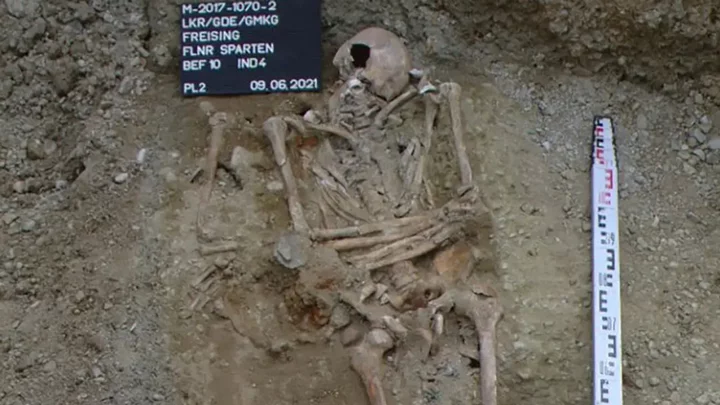
'Sophisticated' prosthetic hand found on medieval skeleton
If you thought prosthetic hands were too advanced for people living hundreds of years ago, think again. Archaeologists have found the remains of a man who died in Medieval Germany, who had prosthetics in place of several fingers. The grave was found by pipeline workers in Freising, a town near Munich. The Bavarian State Office for Monument Preservation said: “Even for experienced archaeologists, this was a particularly special find: a skeleton in which parts of the fingers of its left hand are missing.” The archaeologists removed the metal from the man’s skeleton to restore and analyse it. They came to the conclusion that he had lost his fingers at some point in his life. Walter Irlinger, deputy of the general conservator at BSOMP, said: “The hollow prosthetic on the left hand replaced four fingers. The index, middle, ring and pinky fingers are individually formed out of sheet metal and are immobile. The prosthetic fingers lie slightly curved, parallel to one another.” The prosthetic also had scraps of fabric and leather, suggesting that the fingers had a leather cover, and were tied to the hand using straps. There was also a gauze-like material inside the fingers, which may have acted as a cushion for the man’s skin from contact with the metal. That period of German history included the Thirty Years’ War, which ended in 1648, which would have increased the need for amputations and prosthetics. One of the most famous amputees from the time was Götz von Berlichingen – or “Götz of the Iron Hand”. He was a German knight who lost his right hand from a cannon injury at the siege of Landshut in 1504. “In the past, prosthetics looked very much like what they were replacing,” said Jacky Finch, a researcher in the KNH Center for Biomedical Egyptology at the University of Manchester. “Nowadays, implants are placed in the sensory system to control nerve action, rather than devices attached to the body by straps or artificially powered.” The BSOMP statement continued: “Doctors at that time were already thinking about how they could make life easier for amputees. “In central Europe, there are currently around 50 similar prostheses from the late middle ages to early modern age that are known.” How to join the indy100's free WhatsApp channel Sign up to our free indy100 weekly newsletter Have your say in our news democracy. Click the upvote icon at the top of the page to help raise this article through the indy100 rankings.
2023-11-08 01:55
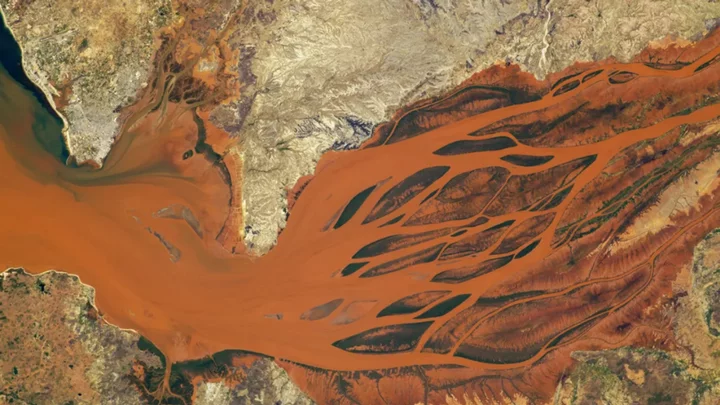
Astronauts capture the 'blood of Earth' in stunning photo
The Earth is home to truly stunning natural features, but sometimes you need a new perspective to appreciate it all over again. Thankfully, the experts at NASA are on hand to remind us just how incredible our planet is with the release of new photos showing the “blood of Earth”. The incredible images seem to show it bleeding, with dramatic red liquid appearing to cascade over the surface. However, it’s nothing at all to do with blood – which is probably just as well. Instead, the first picture shows the Laguna Colorada in the Bolivian Andes in South America from space. Remarkably, the image was taken by an astronaut onboard the International Space Station (ISS) using just a Nikon digital camera. The fact that it was taken more than 400 kilometres away from Earth on a handheld device is pretty staggering, and it offers a look at a natural phenomenon which we’d never otherwise get to see. The first picture shows the impact of red algae flourishing in the shallow water of the laguna, while the second shows the Betsiboka River Delta in Madagascar. This time, the red colour comes as a result of the iron-rich sediment. It’s pretty awe-inspiring stuff, and it’s not the first time that red “blood” has been seen running from our planet, either. Antarctica’s Blood Falls is a bizarre geographical feature in the McMurdo Dry Valleys region of the continent, and it’s one of the strangest natural phenomena you're likely to see. It features a flow of water the colour of blood that can be seen seeping out from a glacier into the ocean. The mystery behind it has fascinated members of the scientific community for decades, but a solution has now been found. Sign up for our free Indy100 weekly newsletter How to join the indy100's free WhatsApp channel Have your say in our news democracy. Click the upvote icon at the top of the page to help raise this article through the indy100 rankings
2023-11-07 20:15
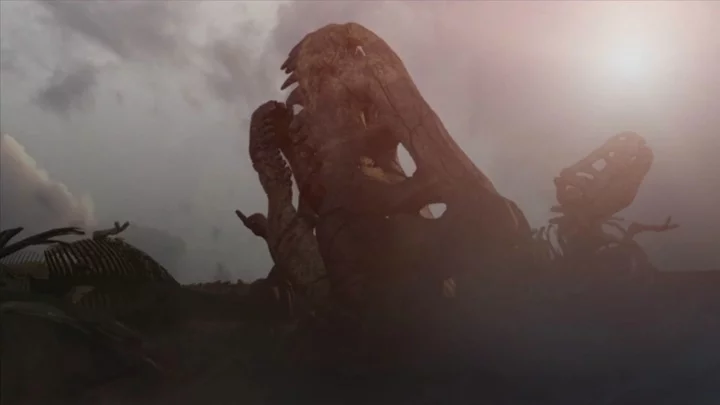
Scientists think they’ve finally solved the mystery of how the dinosaurs went extinct
It’s one of the questions which has fascinated scientists for hundreds of years, but how did the dinosaurs really go extinct? Well, new research might have just solved the mystery once and for all. Of course, most people are familiar with the fact that an asteroid struck the Earth around 66 million years ago, but fewer people might know that the object measured a whopping 10 to 15 kilometres wide and landed in Mexico’s Yucatan Peninsula. Fewer people still might know that while it sparked all sorts of devastation, including earthquakes and megatsunamis, and now experts have revealed that what might have really proved fatal for the dinosaurs was the dust that it caused. We’re not talking a little bit of dust, either. Trillions of tons of the stuff was released into the atmosphere when then asteroid struck. The damage done by this dust is explored in the new report published by Nature Geoscience. So much was released, in fact, that it caused a “global winter”, with huge clouds of silicate dust and sulphur causing temperatures to drop by 15C. The lack of light would have caused entire ecosystems to collapse, causing 75 per cent of species to be rendered extinct. The effects of the dust could have blocked out sunlight for as long as two years, which according to the Belgium researchers who led the study is what would have killed off dinosaurs gradually – rather than being killed off straight away by the asteroid. It is, however, what eventually led to other life forms emerging and ultimately the development of the human race. "Dinos dominated Earth and were doing just fine when the meteorite hit," co-author of the study and planetary scientist Philippe Claeys said. "Without the impact, my guess is that mammals - including us - had little chance to become the dominant organisms on this planet." Sign up for our free Indy100 weekly newsletter How to join the indy100's free WhatsApp channel Have your say in our news democracy. Click the upvote icon at the top of the page to help raise this article through the indy100 rankings
2023-11-07 19:20
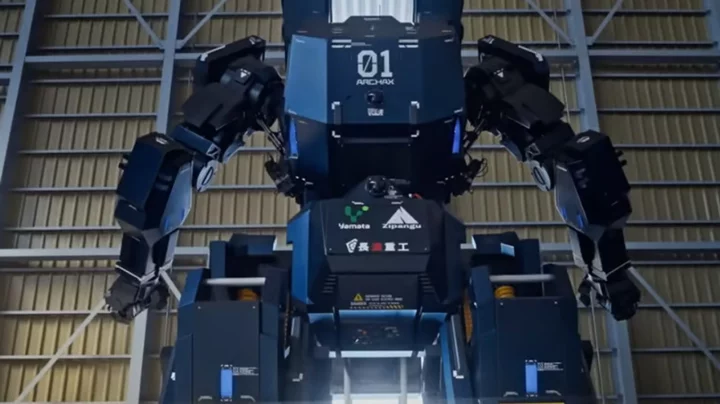
Giant anime 'Gundam' robots are being built to explore the Moon
A Japanese start-up company has revealed a 15-foot-tall robot with hopes of it one day exploring the moon. Tsubame Industries developed the $3 million (£2.5m) robot that resembles the "Mobile Suit Gundam" from a popular anime show. It will be displayed at the Japan Mobility Show set to take place until 5 November. Named after the avian dinosaur archaeopteryx, the Archax boasts a 'vehicle mode' in which it squats down onto its four legs and travels at the speed of six miles per hour. Ryo Yoshida, 25, chief executive of Tsubame Industries plans to build for disaster relief or to explore space in the future. "Japan is very good at animation, games, robots and automobiles so I thought it would be great if I could create a product that compressed all these elements into one," he said. "I wanted to create something that says, ‘This is Japan’." Yoshida shared early images of the Archax on X/Twitter, when Akinori Ishii, technical director at the Gundam Global Challenge, messaged him and got involved in the production. "On Earth, there are many specialized machines for special work," he said. "On a moon base, we are not able to have so many machines. So, maybe a human-like machine will be used in such a situation." The company reportedly aim to create an Archax prototype suitable to explore space by 2028, according to Nikkei Asia. How to join the indy100's free WhatsApp channel Sign up for our free Indy100 weekly newsletter Have your say in our news democracy. Click the upvote icon at the top of the page to help raise this article through the indy100 rankings.
2023-11-02 00:19

Scientists make key discovery about mysterious origins of Egypt’s Great Sphinx
The feats achieved by the Ancient Egyptians have long flummoxed even the most renowned experts. For example, how on earth did they build the Great Pyramid of Giza? It’s taken centuries for scientists and archaeologists to come up with an answer, and even that’s not set in stone. But now, researchers believe they’ve finally worked out how the Great Sphinx was made more than 4,500 years ago. Sure, there’s a pretty broad consensus about how the face of the giant limestone statue was created – it was most likely hand-carved by stone masons. But the imposing, multi-layered body had continued to evade explanation. However, researchers at New York University, have finally concluded that the body came about. And it wasn’t all thanks to the masonry skills of local workers. They believe that the shape was sculpted by Mother Nature herself, in the form wind. “Our findings offer a possible ‘origin story’ for how Sphinx-like formations can come about from erosion,” Leif Ristroph, senior author of the study, said in a statement. “Our laboratory experiments showed that surprisingly Sphinx-like shapes can, in fact, come from materials being eroded by fast flows.” For their study, the team took harder rock encased in mounds of soft clay to mimic the terrain along the Nile River in northeastern Egypt. They then washed over these formations with a fast-flowing stream of water to replicate the wind and, in the end, the clay assumed a Sphinx-like shape. The resulting form consisted of a lion’s “head,” “neck,” “paws” laid out in front and an arched “back". “There are, in fact, yardangs (rock features formed by air erosion) in existence today that look like seated or lying animals, lending support to our conclusions,” Ristroph pointed out. Still, we’re sure Ristroph would be the first to admit that he and his colleagues weren’t the first to come up with the aeolian erosion theory. In 1981, geologist Farouk El-Baz suggested that the iconic Sphinx was originally a flat-topped shape that was worn down by wind over time. Furthermore, El-Baz believed that the builders of Ancient Egypt would have known of these natural processes, and so carefully selected the shapes of their most iconic structures to withstand them. "Today, the pyramids of Giza exist in perfect harmony with their windy environment," the scientist said back in 2001. "Had the ancients built their monuments in the shape of a cube, a rectangle, or even a stadium, they would have been erased by the ravages of wind erosion long ago." Nevertheless, the New York University team were the first to show exactly how this phenomenon could have occurred, and their findings have broader implications. "The work may also be useful to geologists as it reveals factors that affect rock formations—namely, that they are not homogeneous or uniform in composition,” Ristroph said. "The unexpected shapes come from how the flows are diverted around the harder or less-erodible parts." Sign up for our free Indy100 weekly newsletter Have your say in our news democracy. Click the upvote icon at the top of the page to help raise this article through the indy100 rankings
2023-11-01 20:25
